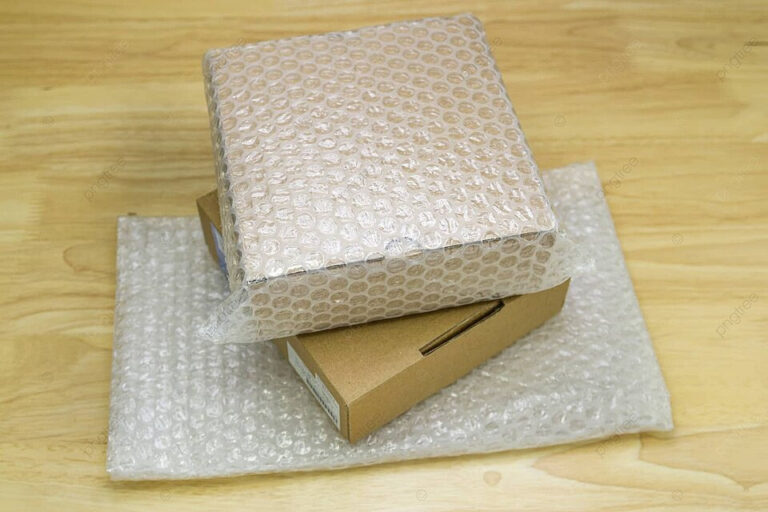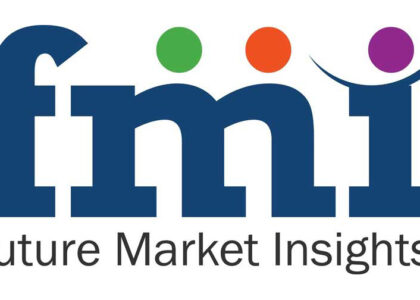Between 2022 and 2029, the global bubble wrap packaging market is anticipated to experience buoyancy, with projections indicating a climb to US$ 4.2 billion by 2034, fueled by a Compound Annual Growth Rate (CAGR) of 3.1%. This growth trajectory underscores the enduring demand for bubble wrap packaging solutions across various industries, including e-commerce, electronics, and logistics. As businesses prioritize product protection, shipping efficiency, and customer satisfaction, bubble wrap packaging continues to be a preferred choice due to its lightweight, cushioning properties, and cost-effectiveness. With the surge in online retail and parcel delivery services, the market for bubble wrap packaging is poised for steady expansion.
Future Market Insights anticipates conducting a comprehensive comparison and review analysis of the dynamics shaping the bubble wrap packaging market. This evaluation is primarily influenced by various industry factors, coupled with distinct considerations related to their highly flammable nature, restricting their applicability in various protective packaging scenarios. Additionally, growing environmental concerns surrounding the use of single-use plastics present another influencing factor in the market’s trajectory.
Request Sample Report: https://www.futuremarketinsights.com/reports/sample/rep-gb-5612
Following closely, North America secures the second spot in the global protective packaging market. This is chiefly attributed to the robust demand for packaged products across diverse industries, including electronics and the food sector. The allure of pre-packaged items and the imperative to prevent damage contribute significantly to the region’s substantial market share.
In Europe, a noteworthy demand for eco-friendly protective packaging solutions prevails, fueled by an increased emphasis on environmental awareness. Latin America (LATAM) and the Middle East and Africa (MEA) regions are also experiencing growth in the protective packaging market, albeit at a slightly slower pace, as they align with the global trend towards more sustainable and protective packaging practices.
Market Drivers:
- E-commerce Boom: The exponential growth of the e-commerce industry drives demand for protective packaging materials like bubble wrap. With more goods being shipped, there’s a corresponding need for secure packaging to prevent damage during transit.
- Product Protection: Bubble wrap provides excellent cushioning and shock absorption properties, ensuring the safe transportation of fragile items. As companies prioritize delivering goods intact to maintain customer satisfaction, the demand for effective protective packaging increases.
- Growth in Electronics and Consumer Goods Industries: With the continuous innovation and expansion in the electronics and consumer goods sectors, there’s a growing requirement for protective packaging solutions to safeguard delicate electronic devices, appliances, and other goods.
- Sustainability Concerns: The development of eco-friendly bubble wrap variants made from recycled materials or biodegradable alternatives addresses environmental concerns. As sustainability becomes a more significant focus for consumers and businesses, the demand for environmentally friendly packaging options rises.
- Innovations in Packaging Technology: Advancements in packaging technology lead to the development of bubble wrap with enhanced features such as anti-static properties, custom sizes, and improved sealing capabilities, catering to diverse industry needs and preferences.
Market Restraints:
- Environmental Impact: Traditional bubble wrap is made from plastic materials that contribute to environmental pollution and waste. Concerns about the environmental impact of plastic packaging materials prompt regulations and consumer preferences favoring sustainable alternatives.
- Cost Concerns: While effective in protecting goods, bubble wrap can add to packaging costs, particularly for businesses handling large volumes of shipments. This cost factor may deter some companies from using bubble wrap extensively or encourage them to explore more cost-effective alternatives.
- Space and Storage Constraints: Bubble wrap packaging requires storage space, both during manufacturing and for businesses that utilize it for packaging their products. Limited storage capacity or warehouse space may pose logistical challenges for companies, especially those with high inventory turnover.
- Competition from Alternative Packaging Solutions: Alternative packaging materials, such as air cushions, foam inserts, and molded pulp, compete with bubble wrap in the protective packaging market. These alternatives offer different combinations of protective properties, cost-effectiveness, and environmental benefits, influencing buyer choices.
- Regulatory Compliance: Regulatory requirements related to packaging materials, recycling, and disposal impact the bubble wrap market. Compliance with regulations, such as restrictions on single-use plastics or mandates for recyclable packaging, adds complexity and cost to manufacturing and distribution processes.
Key Players
- Veritiv Corporation
- Sealed Air Corporation
- Jiffy Packaging Co.
- Pregis Corporation
- Smurfit Kappa
- Barton Jones Packaging Ltd.
- IVEX Protective Packaging Inc
- Automated Packaging System
Moreover, the growing number of online resellers has motivated major players such as Amazon and Target to develop the best packaging formats to outperform competitors and offer cheaper, faster shipping with specialized packaging methods. Protective packaging, including bubble wrap, and air pillows are favored means of protection, especially for online orders, thus significantly contributing to the growth of the bubble wrap packaging market.
Competitive Landscape
The key players in bubble wrap packaging market are more into customized packaging, especially the eco-friendly ones.
- Polycell Corporation is offering oxo-biodegradable eco bubble. It has incorporated Reverte oxo-biodegradable additives into polyethylene resins, which can be degraded up to certain extent.
- Jiffy Packaging Co. Limited is providing green bubble, which is made of 50% recyclable materials.
- Sealed Air Corporation, in May 2019, did announce acquiring Automated Packaging Systems (leading in designing and production of packaging materials) for the latter to help the former in developing sustainable packaging solutions.
As of now, the global production capacities of bio-plastics is over 2 million tons in terms of volume, with nearly 65% of the volume utilized in the packaging industry. Companies can provide Kraft air bubble mailers and bags, with bubble film (bubble wrap packaging) made from bio-plastic. This will save on the overall cost and reduce the environmental impact of conventional bubble wrap packaging.
Leading the Way: E-Commerce Market Emerges as a Catalyst for the Packaging Industry’s Evolution
In the ever-evolving retail landscape, from hypermarkets to online platforms, the influence of e-commerce is reshaping the way products are packaged. Manufacturers and retailers are channeling substantial investments and efforts into ensuring their products meet performance standards, recognizing the profound impact that faulty packaging can have on consumer choices. The repercussions of damaged products can be financially significant for large retailers, making the role of effective packaging, such as bubble wrap, crucial in enhancing the consumer experience and ensuring product safety. Furthermore, the surge in mobile usage and the accessibility of low-cost data have propelled the growth of the e-commerce sector, thereby acting as a key driver for the expansion of the bubble wrap packaging market.
Buy Now/Purchase: https://www.futuremarketinsights.com/checkout/5612
Key Segmentations:
By Product:
- Bubble Sheets
- Bubble Bags/mailers
By Material:
- LDPE
- HDPE
- LLDPE
By End-use:
- Manufacturing & Warehousing
- Pharmaceuticals
- Electronics & Electricals
- Automotive & Allied Industries
- Food & Beverages
- Cosmetics & Personal Care
- Others (Agriculture, Healthcare etc.)
- e-Commerce
- Logistics & Transportation
About Future Market Insights (FMI)
Future Market Insights, Inc. (ESOMAR certified, recipient of the Stevie Award, and a member of the Greater New York Chamber of Commerce) offers profound insights into the driving factors that are boosting demand in the market. FMI stands as the leading global provider of market intelligence, advisory services, consulting, and events for the Packaging, Food and Beverage, Consumer, Technology, Healthcare, Industrial, and Chemicals markets. With a vast team of over 5000 analysts worldwide, FMI provides global, regional, and local expertise on diverse domains and industry trends across more than 110 countries.
Contact Us:
Future Market Insights Inc.
Christiana Corporate, 200 Continental Drive,
Suite 401, Newark, Delaware – 19713, USA
T: +1-845-579-5705
For Sales Enquiries: sales@futuremarketinsights.com
Website: https://www.futuremarketinsights.com
LinkedIn| Twitter| Blogs | YouTube


